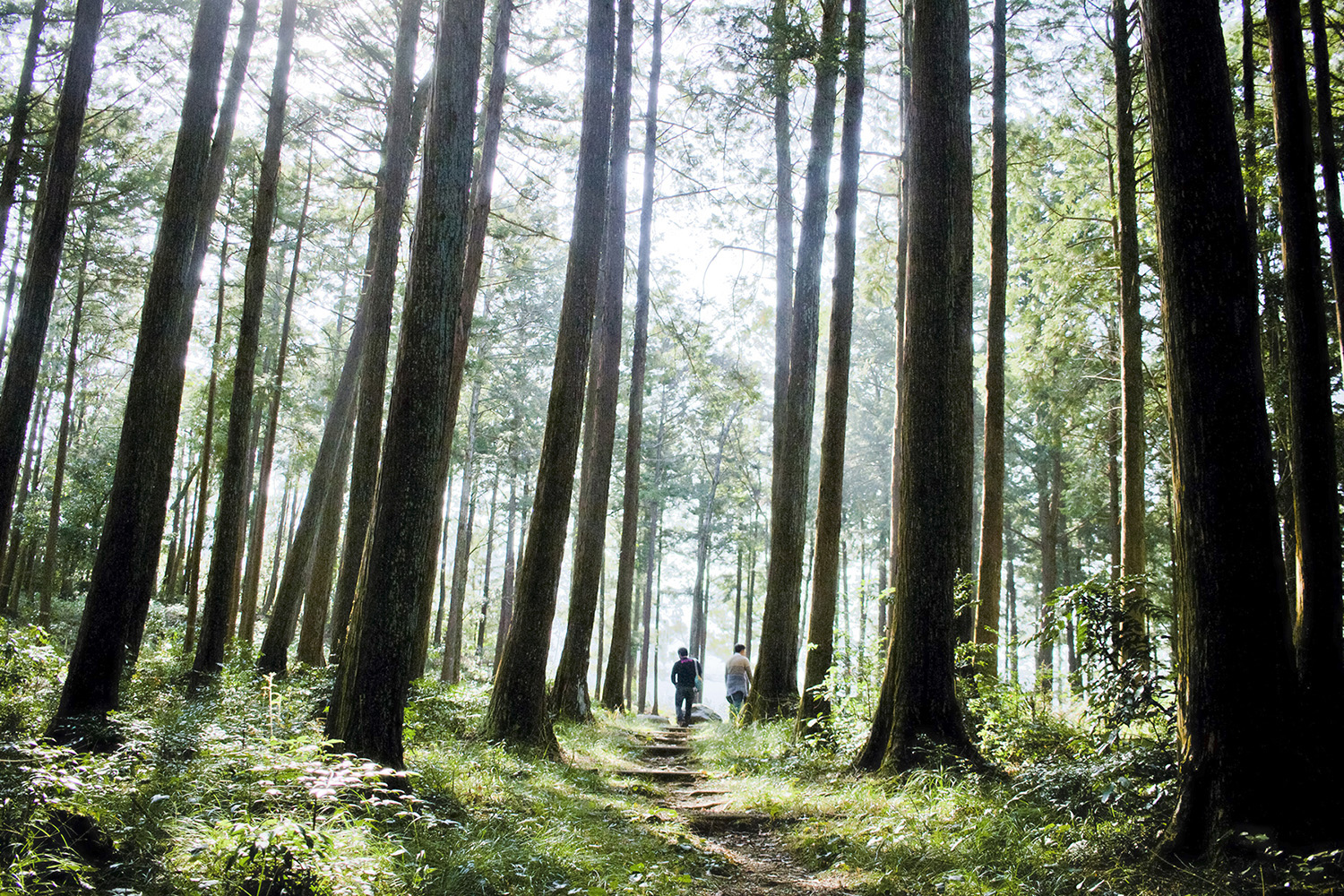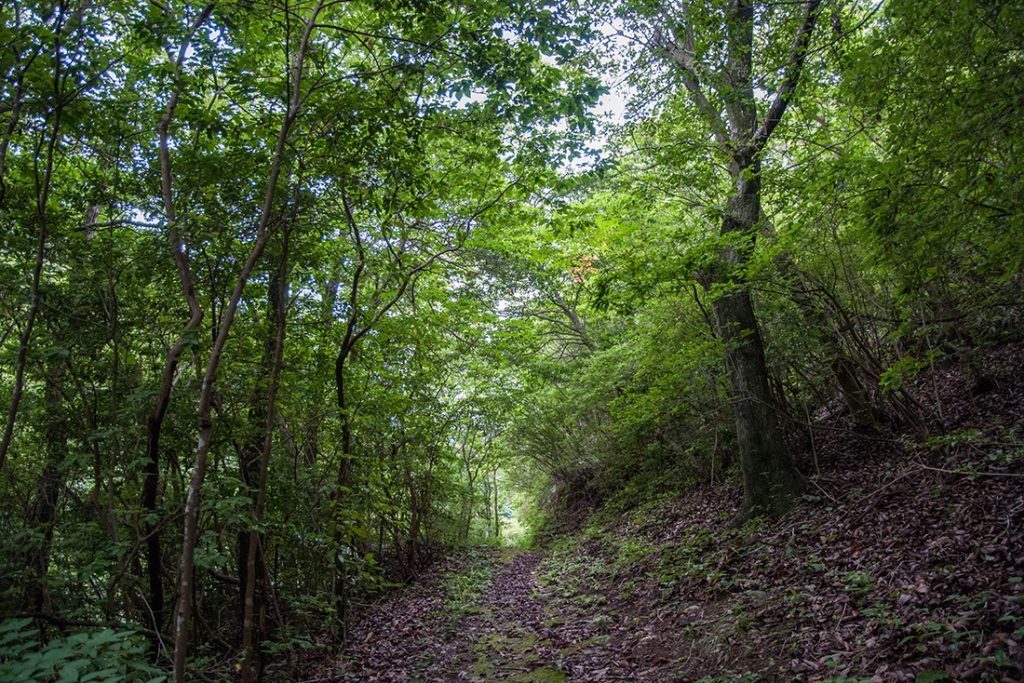
Mountains used to be covered with natural forests.
In the natural forests of the past, different kinds of conifer trees and broadleaf trees used to gradually grow bigger and taller.
The sun shined onto the ground, where bushes and grasses grew under the forest canopy. The soft soil mixed up with fallen leaves and grasses contained lots of water under the ground. The mountains with a rich groundwater were able to pump rainwater into rivers little by little over a long time span.
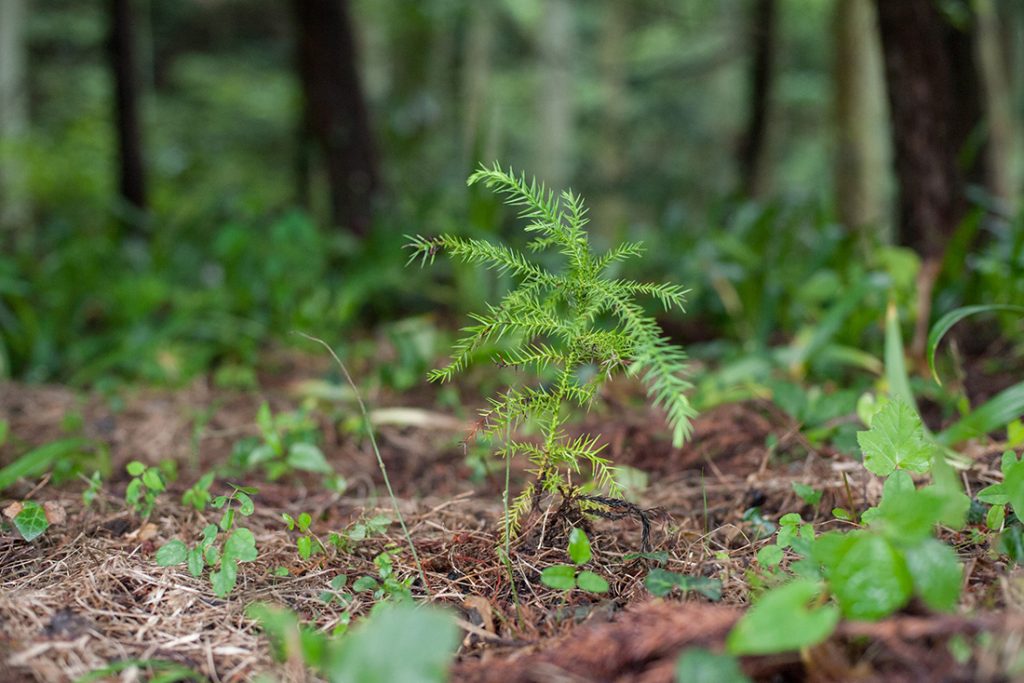
Why did natural forests decrease rapidly?
During the World WarⅡ, tons of trees were cut down to meet construction and fuel demand of wartime supplies and the mountains became bare of trees.
Then, after the end of war, tree planting was encouraged through subsidies to prepare for growing industrial demand. Because cedar trees grow fast and were thought to be the best building material for houses, the mountains were turned into artificial forests, almost exclusively of cedar trees.
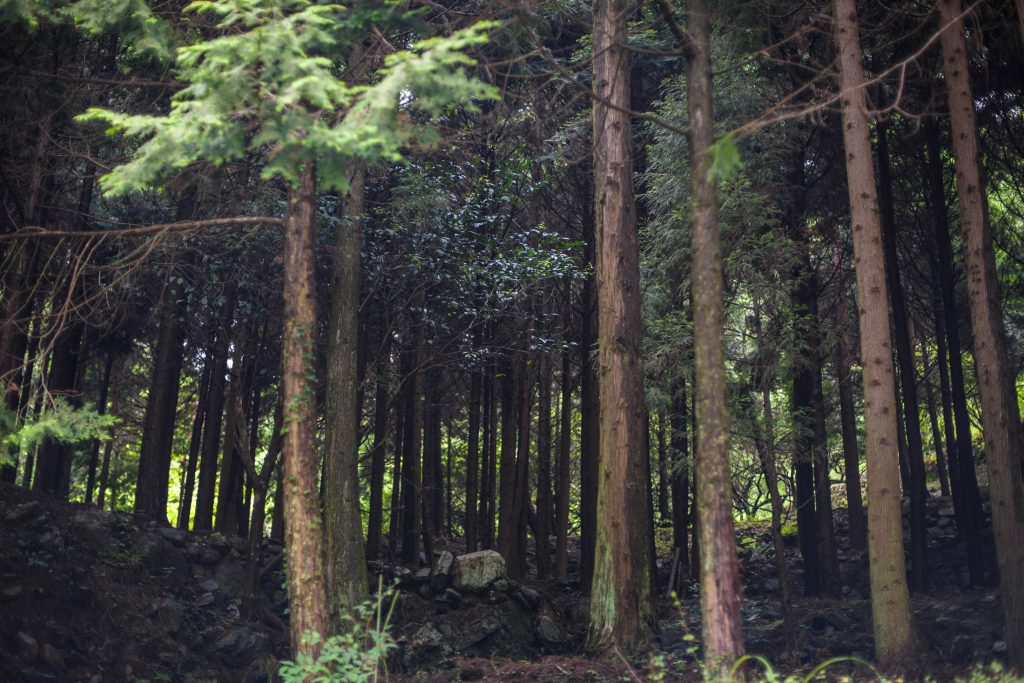
Reasons for abandoned cedar trees
After the Japanese mountains were planted with cedar trees on a large scale, free trade was applied to timber trade. As cheap imported timber increased in the Japanese market, the Japanese cedar trees lost their most value. Japanese cedar trees are no longer cut down because they do not sell well.
People have become reluctant to take care of artificial forests of almost no value. Without pruning and thinning, crowded forests do not allow the sun shine to the ground, where grasses do not grow and the soil gets harder and does not absorb rainwater a lot. This means rainwater runs onto the surface at once.
As the mountains of artificial forests have lost their water retaining capacity, less water filters through the earth to form groundwater, resulting in the decrease of the riverwater.
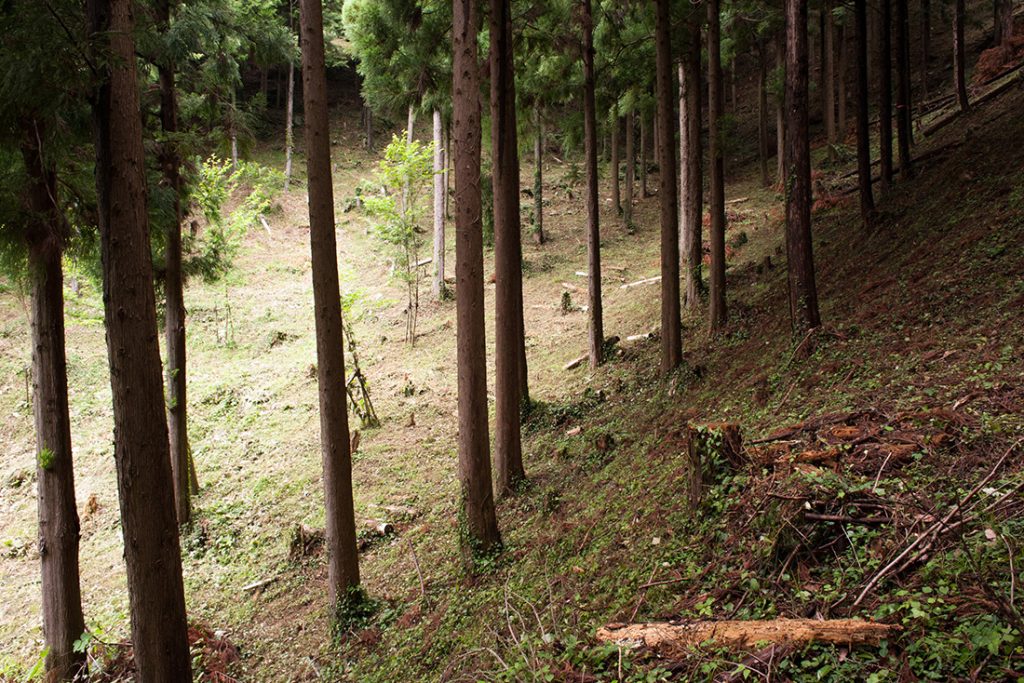
What can we do to increase the riverwater?
The river called Akui river runs through Kamiyama, where it rains annually about 2,000 mm and the mountains are covered with large groves of trees. the river has only 30% of its original water compared to 30 years ago.
A way of retaining riverwater is forest thinning. When trees are selectively removed from the forests, plants on the ground receive more sunlight to grow and the ground becomes able to absorb more water. More rainwater is expected to filter into the river through the ground.
SHIZQ project is working on to bring as much sunlight as we can back into the forests, because we consider forest thinning is the most important to address the problems of artificial forests and decreasing water resources.

